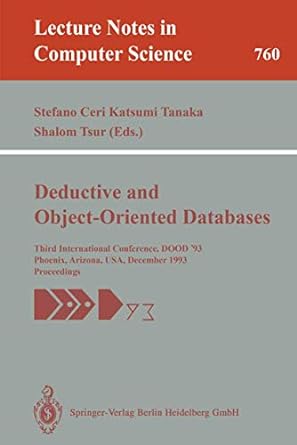Answered step by step
Verified Expert Solution
Question
1 Approved Answer
Basic N - time Design: Let s assume we have N distinct HORS private / public key pairs all generated from one random seed value
Basic Ntime Design: Lets assume we have N distinct HORS privatepublic key pairs all generated from one random
seed value z This can be done with various means, for example, by deriving ith key pair from the main seed as
zi Hri and then deriving all other components of privatepublic key pair from zi by using zi as the input of
PRNG As is this design requires the verifier to store N distinct HORS public key after the key generation.
Achieve Basic O PK size Design with a Tradeoff: Can you design a simple algorithmic approach that enables
O public key storage, but with a tradeoff imposing LogN signature size and signature generation blowup
increase
For instance, in the above basic Ntime design, the signer would only derive a small set of private key components
and sends exactly one HORS signature to the verifier for each signing operation. However, there is indeed a simple
way, in which you can make key generation such that the verifier will have only one small public key ie just one
hash value! but then the signer always must perform LogN computation and send LogN keying material
eg partial keys and signature over the network. Note that, initially, please assume that the signer keeps each
PK PKN in memory so that LogN computation becomes possible. Of course, if you want, you can also
discuss how much computation is required if the signer only keeps root seed z You can notice that either way, the
transmission overhead is always bounded by LogN
Please describe your algorithms by providing the necessary steps to show, how you transform Basic Ntime
Design into O PK size with LogN Signer Overhead Tradeoff You must describe your notation and steps
in sufficient detail for the algorithm to be clearly understood.
Hint: You already used such a technique in your previous assignments! For example, you can initially assume
there are only HORS skPK pairs at the signer. After this, imagine, how could you obtain only one hash value
from those PKs and give it to the verifier draw on a piece of paper And finally, how can you make the verifier
authenticate it with only sublinear transmission? When you figure it out with just elements, you can then write an
algorithm to describe your solution in a more formal way generalized for N values Remark that you must write
an algorithmic description, not a mere verbal highlevel description to earn credits. Your algorithm should have a
key generation offline signing online and verification online These three algorithms give already a clue which
technique will be used together with HORS signature
Step by Step Solution
There are 3 Steps involved in it
Step: 1

Get Instant Access to Expert-Tailored Solutions
See step-by-step solutions with expert insights and AI powered tools for academic success
Step: 2

Step: 3

Ace Your Homework with AI
Get the answers you need in no time with our AI-driven, step-by-step assistance
Get Started


